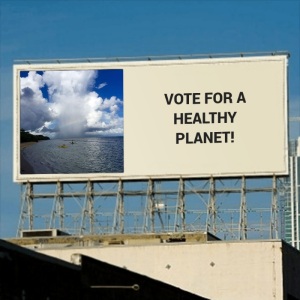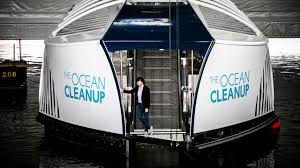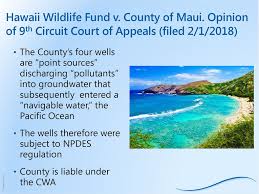
Recycle and Conserve
“European countries are recycling 35% to 40% [of their plastic waste]. The U.S. only recycles 10%.”
By Linn Smith
I am spending time in a suburb in the Southwestern part of the United States. After being a diligent recycler most of my adult life, I have come to realize that many households do not share my passion for doing their part to prevent further negative impact on our planet. Even though I’m conscientious about buying goods in bulk from local health food stores, I still accumulate some bottles, cans and plastics. It’s the world we live!
I have been in the Southwest for several weeks and have repeatedly asked people and businesses about a drop off place for glass and plastic. The answer is always the same….the surrounding suburbs no longer take drop off recyclables as rates have gone up and in some sections there has been complete halt on even curbside recycling for glass and plastic. Cans are less of a problem, as many are willing to turn them in for cash, but plastic and glass? My efforts have produced nothing.

Recycling Shut Down!
Following is the message I found when trying to locate a place to drop off my recyclables:
**CLOSURE NOTICE**
All City of *****recyling Drop-off Centers Are Indefinitely Closed
Due to increasing recycling processing fees and decreasing commodity values, the City of **** has found it necessary to reevaluate its entire recycling program. While we value the importance and place high priority on conserving our natural resources, we must also take into account financial considerations to ensure we are able to maintain a sustainable program. The total operating cost for the City of ***** three recycling drop-off centers is approximately $250,000 per year. While we have been pleased to offer this service for many years and appreciate you visiting our centers, unfortunately the decision has been made to indefinitely close all three locations.”

A newly formed mountain of waste.
The Landfill: A Mountain of Garbage!
I then sought out the local landfill. I couldn’t enter as the truck in the picture was on guard to keep out private citizens. But standing on the road running parallel to the landfill, I took in the site of a mountain newly produced by garbage from the city that won’t allow recycled dropoffs. As I stood in disgust of this newly formed mountain of garbage in our once beautiful desert Southwest, I wondered, “Where did we go wrong? Was it just a hundred years ago that people were growing their own food, canning, reusing their jars, sewing their own clothes, living what would now be called a sustainable life?”

Guarding the landfill.
The site of all those recyclable materials sitting in a landfill in our beautiful desert for a hundred years and accumulating day by day, year by year is almost too much for me to comprehend. To me you either care about out planet, leaving future generations with at least the knowledge that you tried, or you don’t…..you further the “pig sty” concept of what use to be our beautiful earth. The choice is ours to not be lazy!
Where will our Recyclables Go?
The excuse for many cities is this….China quit taking our dirty waste which we had been shipping over to them since 1992 and that alone broke the recycling system in the U.S. Keefe Harrison, CEO of the Recycling Partnership, a nonprofit that seeks to boost the industry, stated “European countries are recycling 35% to 40% [of their plastic waste]. The U.S. only recycles 10%. How tragic is that? We’re fighting an uphill battle to make it cost competitive from day one. The U.S. has previously outsourced so much of its recycling to Asia that the domestic industry languished. And there’s the fact that plastic manufacturers keep making more and more of it, and consumer brands like Procter & Gamble, Nestlé and Walmart keep wrapping more consumer goods in it.”
According to an article in the Sierra magazine, China’s refusing to take our recyclables has given us the opportunity to develop a plan of our own if we care enough to go down that avenue. “The whole crisis narrative has been wrong,” says Steve Alexander, president of the Association of Plastic Recyclers. “China didn’t break recycling. It has given us the opportunity to begin investing in the infrastructure we need in order to do it better.”
Alliance to End Plastic Waste
There are many different types of plastic. Some can be recycled, some cannot. In the past companies have used the plastic most profitable without considering what happens to their product packaging.
Several petrochemical companies have joined big consumer brands in pledging to make most of their plastic recyclable, reusable or compostable within the next decade or two. Their group, Alliance to End Plastic Waste, has promised to spend $1.5 billion over five years to recycle their packaging products.
Every Bottle Back
Coke, Pepsi and Dr Pepper recently announced a plan, Every Bottle Back, to reduce their dependence on new plastic by collecting, recycling and remaking plastic bottles from plastic they have already produced. “Closed Loop Partners, the leading investment firm in sustainability, will manage upgrades to recycling infrastructure and fund upgrades to equipment at bottle recovery systems. The fund will also be used to help businesses that turn recycled bottles into plastic pellets for reuse in many products.”

The Ocean Cleanup.
The Ocean Cleanup
Then there are the heroes of our planet.The Ocean Clean Up nonprofit organization, started by 25 year old Boyan Slat, is not only working on the clean up of the Great Pacific Garbage Patch, but has recently unveiled technology to clean up rivers that are streaming garbage to the ocean.
“The Interceptor is The Ocean Cleanup’s answer for river plastic waste. It is the first scalable solution to prevent plastic from entering the world’s oceans from rivers. It is 100% solar-powered, extracts plastic autonomously, and is capable of operating in the majority of the world’s most polluting rivers.”

The Ocean Clean Up, Boyan Slat
But we cannot depend on a young man in his 20’s to clean up our planet, even though he has diligently done more than his part. We must all do our part also!
Sources:
*Coca-Cola, Pepsi and Dr Pepper team up for recycled plastics drive
Toby Hill,October 31, 2019
*NPR U.S. Recycling Industry Is Struggling To Figure Out A Future Without China August 20, 2019
Recycle
Follow is at: https://www.facebook.com/982573808477195/posts/2648321581902401/







































